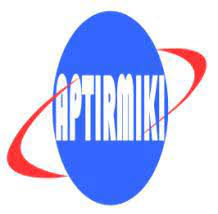Evaluasi Sistem Informasi Manajemen Rumah Sakit Di Instalasi Rekam Medis RSUP H. Adam Malik Dengan Metode Human Organization Technology Fit (HOT-FIT) Tahun 2019
DOI:
https://doi.org/10.52943/jipiki.v6i1.510Keywords:
Hospital Management Information System, HOT FitAbstract
Based on the regulations of the Act – Act number 44-year 2009 about hospitals, where each hospital is obligated to do the recording and reporting of all activities of the Organization of the hospital in the form of hospital management information system (SIMRS). Therefore, every hospital is obligated to run SIMRS with the use of open source as has been set in the Year 2013 No. 82 Permenkes about SIMRS. The purpose of the study in order to evaluate the management information system in hospital medical record Installation was RSUP. Adam Malik. Quantitative research method withcross sectional design to measure the research variables model HOT Fit: Human (the use of the system, user satisfaction), Technology (quality system, the quality of information and service quality), Organization (structure), against a Net benefit. Population is the entire staff of medical record that uses SIMRS of 69 people, sampling techniques are the total sampling. The data analysis done in a multiple regression. The purpose of the study to find out the influence of the factor of human technology is preferred, and the organization 's response to the net benefit. The results of the research there is the influence of human factors and technology against a net benefit to mean Ho denied and Ha was accepted, while to factor the organization has no influence on the net benefit, meaning that Ho and Ha accepted rejected. Simultaneously all the independent variables have significant effects on the dependent variable i.e. factors human, technology and organization, the impact on the net benefit. The R-squared value of 0.635 which means all variables the dependent variable may affect independent of 63.5%. Conclusion the research need to craft a careful planning for the development of SIMRS in order to get a quality system, quality of information and service quality, and poured in the master plan, and strategic plan of the hospital.
Downloads
References
Ditjen Yankes Kemekes. 2015. Laporan Evaluasi Pelaksanaan SIRS Online Provinsi Sumatera Utara. https://dokumen.tips/download/link/laporan-evaluasi-pelaksanaan-sirs-online-propinsi-sumatera-utara-tahun-2015, diakses 20 Januari 2019).
Ditjen Yankes Kemekes. 2017. Tahun 2018, semua rumah sakit harus sudah mempunyai SIMRR terintegrasi. (http://yankes.kemkes.go.id/read-tahun-2018-semua-rumah-sakit-harus-sudah-punya-simrs-terintegrasi-2647.html, diakses 20 Januari 2019).
Direktorat Jenderal Pelayanan Medik. 2006. Pedoman Penyelenggaraan dan Proseedur Rekam Medis Rumah Sakit. Jakarta: Depkes RI.
Ghozali, Imam. 2008. Structur Equation Modeling, Metode Alternatif Dengan Partial Least Square. Semarang: Undip.
Hakam, Fahmi. 2016. Analisis, Perancangan dan Evaluasi Sistem Informasi Kesehatan.Yogyakarta: Goysen Publishing.
Handayani, PW & dkk. 2018. Pengantar Sistem Informasi Manajemen Rumah Sakit (SIMRS). Depok: PT Raja Grafindo Persada.
Hariana, E & dkk. 2013. Penggunaan Sistem Informasi Manajemen Rumah Sakit (SIMRS) di DIY. Tesis. Universitas Gadjah Mada.
Hatta, G. 2014. Pedoman Manajemen Informasi Kesehatan Di Sarana Pelayanan Kesehatan. Jakarta: UI-Press.
Huffman, E.K. 1999. Health Information Management ; Edisi 10, Millionis; Physician Record Company.
Kodarisman, K & Nugroho, E. 2013. Evaluasi Penerapan Sistem Informasi Manajemen Kepegawaian (SIMPEG) di Pemerintah Kota Bogor. Jurnal JNTETI, Vol 2 No. 2, 24-32
Kementrian Kesehatan RI. 2008. Peraturan Menteri Kesehatan Nomor 269/Menkes/PER/III/2008 Tentang Rekam Medis.
Kementrian Kesehatan RI 2011. Peraturan Menteri Kesehatan Nomor 1171/Menkes/PER/ VI/2011 Tentang Sistem Informasi Rumah Sakit.
Krisbiantoro, Dwi, dkk. 2015. Evaluasi Keberhasilan Implementasi Sistem informasi Dengan Pendekatan HOT FIT Model (Studi Kasus: Perpustakaan STMIK AMIKOM Purwokerto). Konferensi Nasional Sistem & Informatika 2015 : STMIK AMIKOM Bali.
Khotimah, Anis. 2017. Evaluasi Sistem Informasi Manajemen Rumah Sakit Rajawali Citra Yogyakarta Menggunakan Model Human Organization Technology FIT (HOT-FIT). Tesis: Universitas Gadjah Mada. Yogyakarta.
Murdani, E. 2007. Pengembangan Sistem Informasi Rekam Medis Rawat Jalan Untuk Mendukung Evaluasi Pelayanan di RSU Bina Kasih Ambarawa. Tesis: Universitas Diponegoro. Semarang.
Notoatmodjo, S. 2017. Metodologi Penelitian Kesehatan. Jakarta: Rineka Cipta.
Nurlaila, Titin. 2016. Evaluasi Implementasi Sistem Informasi Manajmen Rumah Sakit (SIMRS) Di RSIA Keluarga Kita Curug Tanggerang Menggunakan HOT FIT Model. Tesis: Universitas Gadjah Mada.
Presiden RI. 2009. Undang-Undang Nomor 44 Tahun 2009 Tentang Rumah Sakit.
Rozanda, NE & Masriana, Arita. 2017. Perbandingan Metode HOT Fit dan Tam Dalam Mengevaluasika Penerapan Sistem Informasi Manajemen Kepegawaian (SIMPEG) (Studi Kasus: Pengadilan Tata Usaha Negara Pekanbaru). Seminar Nasional: Universitas Islam Negeri Sultan Syarif Kasim Riau.
RSUP H. Adam Malik. 2018. Profil RSUP H. Adam Malik Tahun 2017. Medan: RSUP H. Adam Malik.
Rusdiana, M & Moch. Irfan. 2014. Sistem Informasi Manajemen. Bandung: Pustaka Setia.
Rustiyanto, Ery. 2010. Sistem Informasi Manajemen Rumah Sakit Yang Terintegrasi. Yogyakarta: Gosyen Publishing.
Setyawan, Dedy. 2016. Analisis Implementasi Pemanfaatan Sistem Informasi Manajemen Rumah Sakit (SIMRS) Pada RSUD Kardinah Tegal. Indonesian Journal on Computer and Information Technology Vol 1 No 2 November 2016, 54-61.
Sugiyono. 2017. Metode Penelitian Kuantitatif, Kualitatif dan R&D. Bandung Alfabeta.
Supriyono. 2016. Evaluasi Sistem Informasi Manajemen Rumah Sakit Dengan Metode HOT Fit Di Rumah Sakit Umum Daerah Raden Mattaher Jambi. Tesis: Universitas Gadjah Mada.
Yusof, M.M., at al. 2008. An Evaluation Framework For Health Information System : Human, Organization, Technology-Fit Factors (HOT-Fit). Internasional Journal of Medical Informastic, 77 (6), pp.386-398.
Zulfa, Nabila. 2017. Evaluasi Sistem Informasi Farmasi Di Instalasi Farmasi Rumah Sakit Universitas Gajah Mada Dengan Pendekatan Model HOT-FIT. Tesis: Universitas Gadjah Mada.











